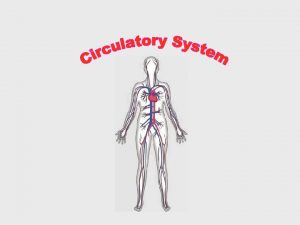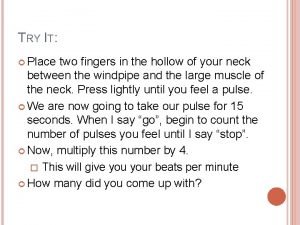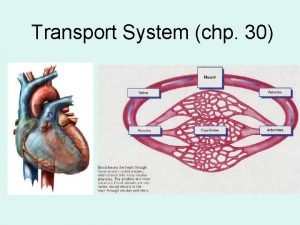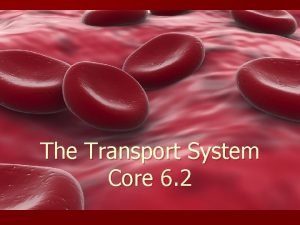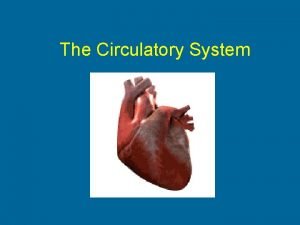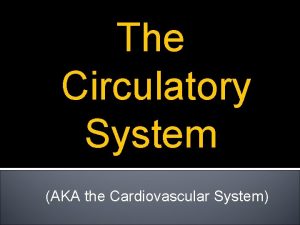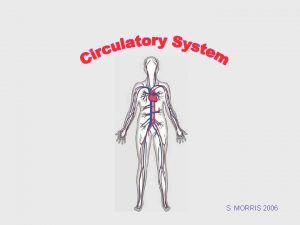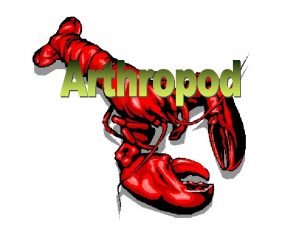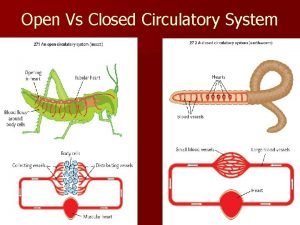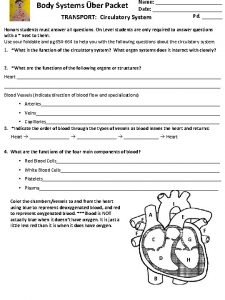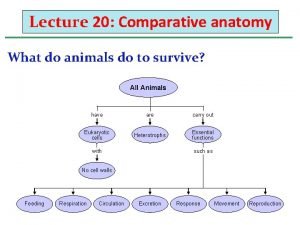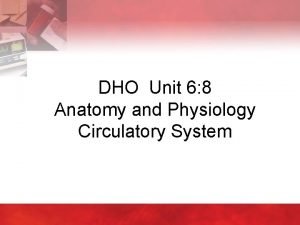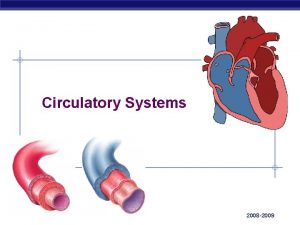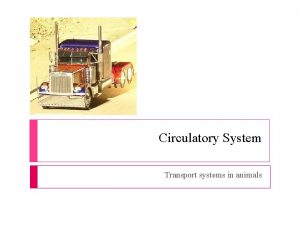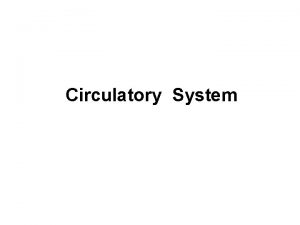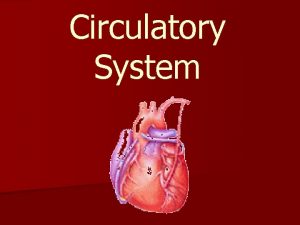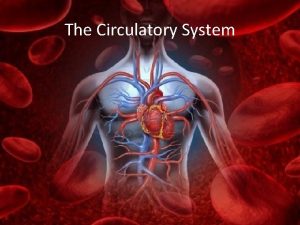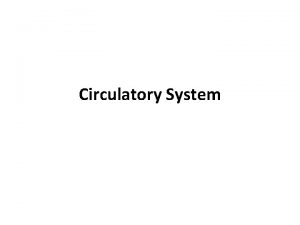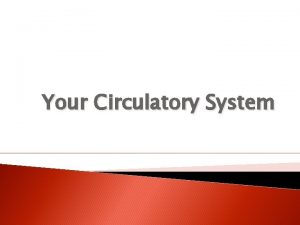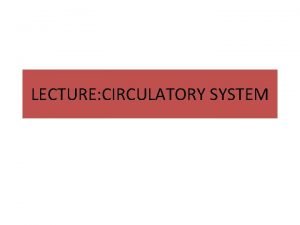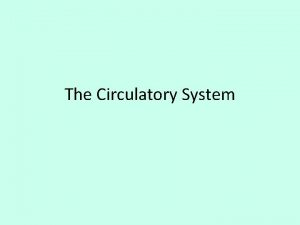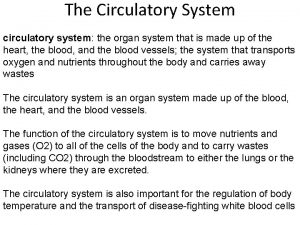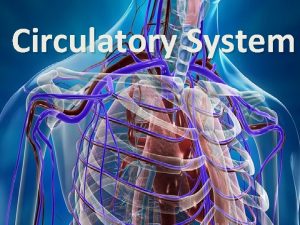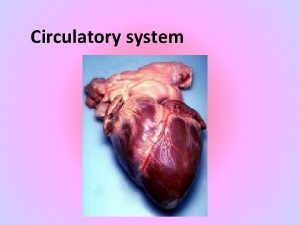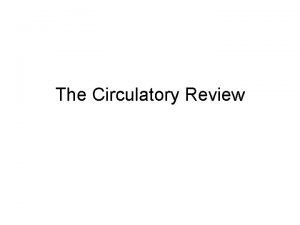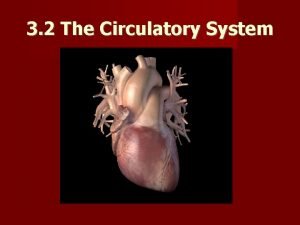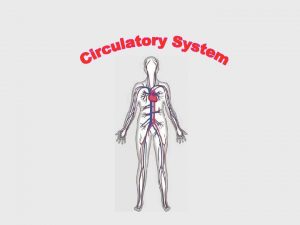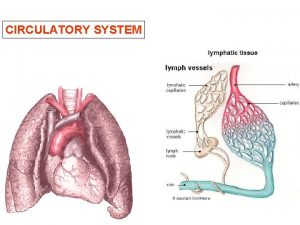Circulatory System Review Questions Review Questions Circulatory system

























- Slides: 25

Circulatory System Review Questions

Review Questions • Circulatory system and infection control

Question What two arteries break of the brachiocephalic artery?

Left subclavian right common carotid Left common carotid Brachiocephalic: Splits into two – right common carotid and right subclavian Septum

Question What is the function of the septum?

Question Which ventricle has the thickest muscle? Why?

Question What is the relationship between the papillary muscles and the chordae tendinae?

Question • Flow of blood from the right atrium and back

Question • What is the different between Gram Negative and Gram Positive Bacteria

Question • What color do the gram negative and positive bacteria stain?

Question • Which bacteria is harder to treat with antibiotics and why?

Gram positive • Thick peptidoglycan cell wall • Outer Capsule • More easily treatable with antibiotics • Stains purple / violet after Gram Stain Both • Inner most plasma membrane Gram Negative • • • Thin peptidoglycan cell wall Another plasma membrane Outer Capsule Harder to treat with antibiotics Stains red/ pink after Gram Stain

Question • What are the 6 links to the chain of infection?

Summaries of how to break the Infection Chain • Infections Agent – identify the microorganism responsible • Source of reservoir – Sanitizing and sterilizing , standard procedures • Portal of exit - Sanitizing and sterilizing , standard procedures, control of human waste* • Mode of Transmission – Sanitizing and sterilizing , standard procedures , clean food and air handling • Portal of entry – Sanitizing and sterilizing , standard procedures , wound and catheter care • Susceptible host – Recognize high risk patients, treatment and immunizations ( vaccines)

Question • How can the Infections Agent chain be broken?

Question • How can the Source of reservoir chain be broken?

Question • How can the Portal of exit chain be broken?

Question • How can the Mode of Transmission be broken?

Question • How can the Portal of entry be broken?

Question • How can the susceptible host?

Question • How does a Mucous membrane, cilia, and coughing and sneezing defend the body? What do all these defenses have in common?

Question • How does a Hydrochloric acid defend the body? Also, what is its other function besides defense?

Question • How does a fever help to defend the body? Why is a high grade fever so dangerous?


Question • What is the function of the immune system?
 Digestive system respiratory system and circulatory system
Digestive system respiratory system and circulatory system How respiratory system work with circulatory system
How respiratory system work with circulatory system Circulatory system and respiratory system work together
Circulatory system and respiratory system work together Circulatory system steps in order
Circulatory system steps in order Section 30-1 the chordates answer key
Section 30-1 the chordates answer key Circulatory system of lungfish
Circulatory system of lungfish Circulatory system of clams
Circulatory system of clams Sheep circulatory system
Sheep circulatory system Circulatory system function
Circulatory system function Closed circulatory system
Closed circulatory system Circulatory system jobs
Circulatory system jobs Smallest blood vessel
Smallest blood vessel Active animals
Active animals How circulatory system work
How circulatory system work What makes up the cardiovascular system
What makes up the cardiovascular system The actual exchange of gases occurs at the site of the *
The actual exchange of gases occurs at the site of the * Single vs double circulatory system
Single vs double circulatory system Arthropods respiratory system
Arthropods respiratory system Arthropoda phylogeny
Arthropoda phylogeny Open vs closed circulatory system
Open vs closed circulatory system Circulatory system foldable
Circulatory system foldable Invertebrate circulatory system
Invertebrate circulatory system Andometr
Andometr Unit 6:8 circulatory system
Unit 6:8 circulatory system Open circulatory system
Open circulatory system Open circulatory system
Open circulatory system



